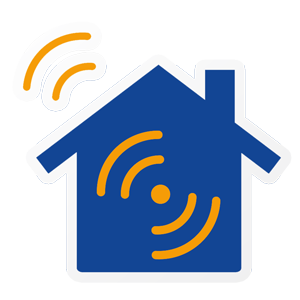
Intelligent control of devices
It is now possible to have an automatic management system that allows you to turn on or turn off the heating by adjusting the temperature of various environments independently, be warned if there is loss of water or gas, if you open the front door or a window, you can view the Interior and exterior of your home, you can turn on the lights or the garden irrigation system, to know the overall consumption of electricity, or a single appliance, turn off the lights or close the blinds and turn on the alarm system, to monitor the production of energy, programming efficiently energy intensive devices through controlled outlets.
All this with one click from a smartphone or a tablet, remotely or automatically managed according to predefined conditions, in a simple, convenient, for the benefit of the savings, security and quality of life.
This is the evolution of what several years ago was called home automation and now goes by the name of Smart Home or Digital Home , i.e. a house in which several components (sensors, switches, cameras, locks, thermostats, entertainment systems, smartphones, tablet and pc) are interconnected with each other to form a intelligent system .
The system is able to collect data from various components and, based on predefined rules, put in place automatic actions (for example: If you open one or more windows turn off the heating; or turn off all the lights, lower the blinds, turn on the alarm system when you leave home; or control the shutters in a coordinated manner with the heating system, lowering them autonomously during the night hours to reduce thermal dispersion.).
The technology available is non-invasive based on communications wireless type then easily applicable to pre-existing homes; it is also flexible, modular and scalable so you can start with a small investment, and integrate it over time according to your own needs.
The technology used is open and supplied by different manufacturers, with a wide choice of components (over 1200), able to guarantee high autonomy in selecting the most appropriate solutions.
The system allows to adjust and certify the House with CEI 64- 8 at its maximum level (the third), relative to automation functions.
Finally, the implementation of such systems leads to virtuous user attitudes, both by acting directly, such as automatically turning off the lights in rooms where there is no presence of people, both acting indirectly at psychological level, for example by displaying instantaneous and energy consumption of the last period (week, month, year). So you get savings by breaking down energy consumption due to an excessive and uncontrolled use of energy.
Assessments in this regard are described in the CEN standard-EN15232. It is estimated that the energy savings achievable by using an automation system for the control of a building is equal to:
- electricity consumption (excluding appliances): savings of up to 15%
- heating/cooling: energy savings of up to 26%
In the tertiary the savings are even more significant because in this context users are less careful to avoid excessive use of energy, and vary depending on the type of the buildings, such as: savings achievable in the schools may reach 20% in lighting and 33% in heating/cooling; in the hotel the 16% for lighting and 48% for heating/cooling.
Services offered
B-eco offers a comprehensive set of services for the realization of automation systems, including turnkey integrated photovoltaic systems and air-conditioning systems with high efficiency, quickly and at the best conditions:
Choose Smart Home
MODULAR: you can start with a small investment in time and add other modules according to your needs;
VERSATILE: you can define and check from the system in a simple and immediate, any electrical device;
NON-INVASIVE: being a wireless technology can be used both on new homes that existing, not needing new wiring.









